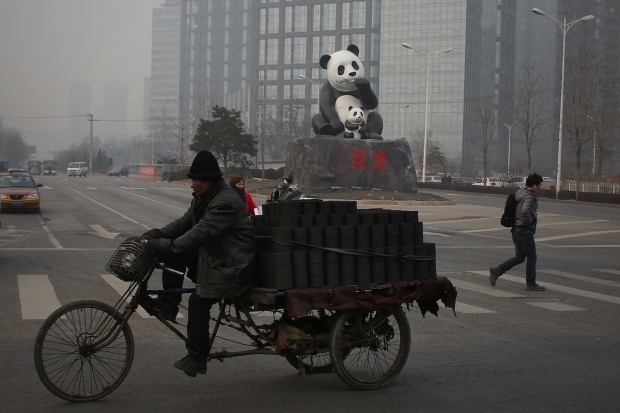Coal will account for no less than sixty percent of China’s total energy use in the next decade, said Zheng Xinye, an energy economist at Renmin University. Currently, coal accounts for seventy percent of China’s total energy consumption. The Chinese leadership vowed to reduce the number to less than sixty-five percent in 2014.
Zheng said China still needs coal to fuel its massive urbanization plan. Zhang Guobao, former head of the National Energy Administration, said coal will not play second fiddle any time soon as renewable energy’s contribution remains minimum despite years of effort.
The continued dependency on coal has profound implications for China’s pollution control strategy. China pledged to spend $473.1 billion in renewable energy by 2015 to reduce pollution. Zheng said the Chinese leadership needs to reconsider its investment and focus more on coal after treatments.
“China can’t depend on alternative sources of fuel. They are not very stable. Plus, how do you transfer the electricity generated to areas in need?” Zheng said. “China should spend more money on coal desulphurization and denitrification, which should be its key investments in 2014 and 2015.”
Sustained Coal Consumption
The Paris-based International Energy Agency has forecast that China’s coal use will rise 2.6% a year to 3.28 billion tons in 2018. Citibank said China’s demand for coal will peak by 2020.
Zheng said China’s urbanization plan, together with infrastructure constructions, will drive the coal industry. China plans to move 250 million people to cities by 2020. It also seeks to invest 630 billion yuan ($104 billion) in high-speed railways to transform transportation in the country.
“If energy-intensive industries use less coal, then China will use less coal,” he said. “ But could renewable energy meet the demand?”
“The fact is, it is very hard for China to further slash coal consumption. But the government can’t afford to let coal use rise either,” he said.
Renewable Energy
Although China has been expanding its capacity to generate electricity from renewable sources such as hydropower and wind, their contribution still accounts for a small proportion of the country’s total energy consumption.
In 2012, the number stood at nine percent. A report presented to the National People’s Congress said the state’s grid operators are slow in bringing the electricity online.
China’s renewable energy resources, along with fossil fuels, are concentrated in the west of the country. Transportation channels need to be constructed to bring electricity to the east, the engine of China’s economic growth.
According to the report, grid planning “has fallen out of step” with China’s renewable plans. “Grid construction lacks behind the development of renewable energy,” it says. “A lot of electricity can’t be sent out.”
Shifting to other sources of energy, such as natural gas, is also a difficult task.
China currently imports about thirty percent of its natural gas, according to Lin Boqiang, an energy economist at Xiamen University.
The country has been trying to convert coal to synthetic natural gas to fill the gap, but Lin said the process emits more carbon dioxide and sulphur and produces more dust than simply burning coal.
“China’s coal-to-gas conversion is driven by the smog problem,” he wrote. “But the process itself burns a lot of coal. It is no good for reducing coal consumption.”
Zheng said China should re-examine its investments in cleaner energy resources. In the meanwhile, he said the country should focus on coal after-treatments.
China has made the removal of sulfur contents from coal a priority. It wants to slash sulphur dioxide emission by eight percent to 20.86 million tons in 2015. Zheng said the key is investing in supervision mechanisms to guarantee that coal-fired power plants are doing their work.




